State of Alabama CDBG Loan Program
ED LOANS
Eligible applicants may apply for ED funds anytime during the program period to make loans to private businesses for locating or expanding in the community and creating or retaining jobs for low and moderate income persons. ED loans can be used for purchasing land, buildings and equipment, site improvements, construction or renovation of buildings, operating capital, or any other CDBG eligible activity. A reasonable percentage of ED loan projects may be a grant to cover administrative costs. Deferred payment loans will have a write-off provision. Loans made from the CDBG Revolving Loan Fund will be governed by the same requirements as loans from the CDBG ED Fund. ED funds used by communities to make loans to private businesses will have a payback requirement. The determination as to the local government’s disposition of the proceeds of repayment of loans will generally be made at the time an ED loan is funded. As required by Section 104(j) of the Housing and Community Development Act, the State will, as part of all application reviews, recognize the applicant’s right to retain program income to the extent such income is applied to continue the activity from which such income was derived. The repayments may be allowable to the regional commissions/councils to be used for similar purposes if they are determined to be nonprofit organizations serving the development needs of the communities in non-entitlement areas. A grant ceiling of $250,000 will apply to applications requesting ED loans, although there is a waiver provision. The State will maintain the right to deny funding of any application or activity during the program period depending on the quality of the loan, or appropriateness of the proposed project; or the capacity of the community to undertake such a project. Threshold requirements for the ED loans are listed as follows and are in addition to overall thresholds listed earlier in the Action Plan.
Thresholds
- The proposed activities generally must be associated with an economic development project
creating and/or retaining permanent jobs. - The proposed project must not involve intrastate relocation of a business, except when such
relocation may have been necessitated due to inadequacies associated with the existing location
and a move to a new location will result in a greater number of jobs. - The applicant must have a commitment from the business to create or retain jobs.
- Beneficiaries of ED fund projects must be at least 51 percent low and moderate income persons.
Threshold Evaluation Criteria
- CDBG dollars per permanent job.
- Leverage ratio (private dollars as compared to CDBG dollars).
- The actual number of permanent jobs to be created or retained.
- Potential for spin-off benefits.
- Job diversification.
- Loan pay-back/collateral.
ED Float Loans
Program Objectives
A primary objective of the float loan program is to expand economic opportunities, principally for persons of low and moderate income. Normally, the program will be used only to aid the creation of new jobs and on projects where there is likely to be a substantial economic development impact. In exceptional circumstances the float loan program may be used to help retain jobs. Of the jobs to be created (or retained), at least 51 percent must be occupied by or made available to low and moderate income persons. If float loans are made in order to retain jobs, the applicant must clearly demonstrate that, without CDBG assistance, the jobs would be lost.
Eligible Activities
The float loans can be used to finance any necessary activity including acquisition, site preparation, new
construction, renovation, purchase of machinery and equipment, working capital, refinancing, and other
CDBG eligible activities approved by the State.
Loan Amount and Terms
The minimum loan amount shall be $1 million and the maximum loan amount shall be $10 million. The maximum
and minimum loan amounts may be waived by the State when significant long-term economic benefits for low and
moderate income persons are involved. The loan will normally be for one year with an option to extend for one more
year. Interest earned on float loans will be treated as program income and will be used for CDBG eligible activities.
Float Loan Evaluation Criteria
Applications for ED float loans will be considered on a continuous basis. However, due to the unique nature of this
program, the State intends to fund only a limited number of projects. Prior to accepting any application, the State
will require a thorough review of the project with the State. Float Loan funding decisions will be based on the following
factors:
- Conformance with the national objective.
- Loan security (Loan security shall be in the form of an irrevocable letter of credit or such other security acceptable to the State).
- Number of jobs involved.
- Private investment.
- Unemployment/community distress.
- Job diversification.
- Indirect/spin-off benefits.




